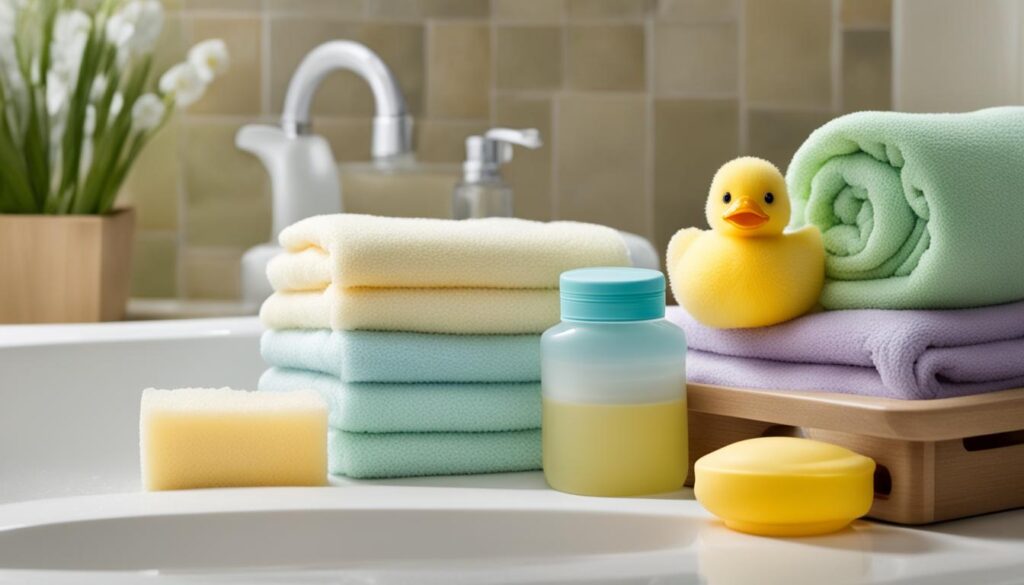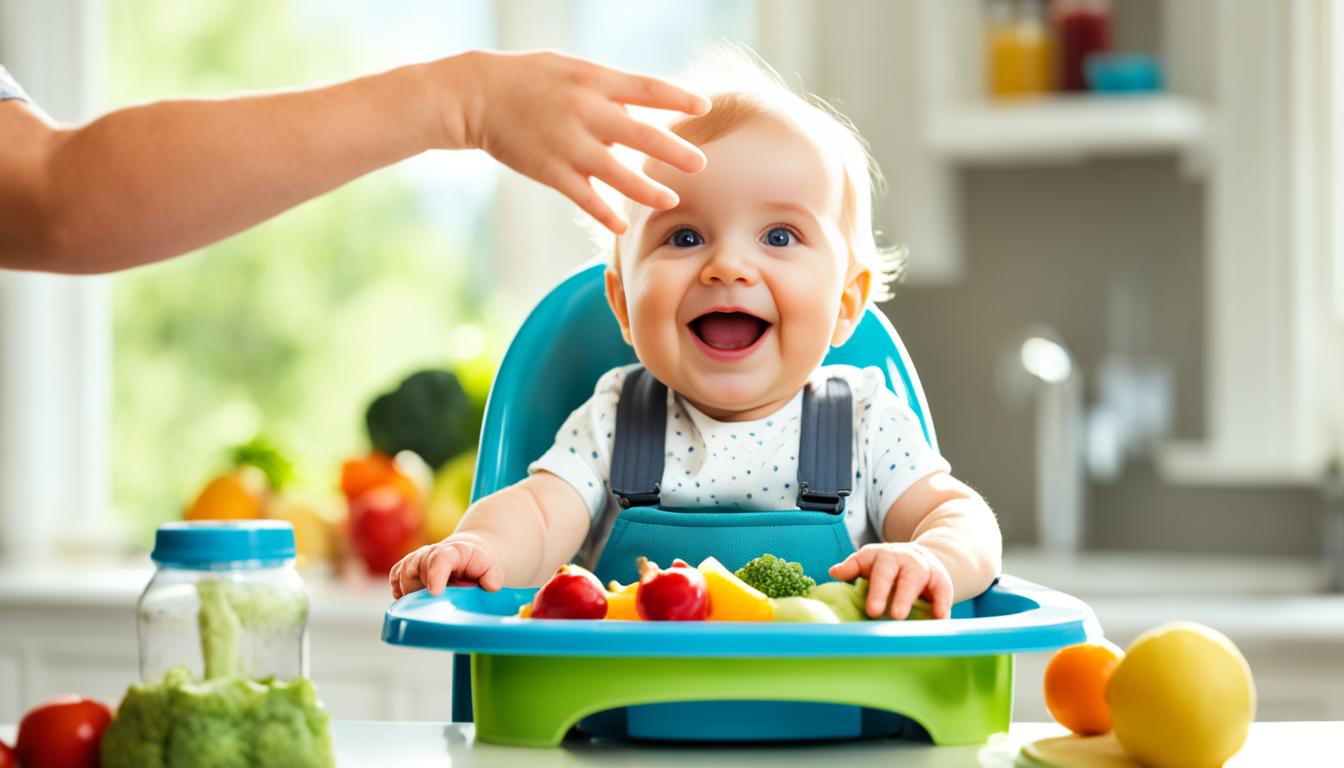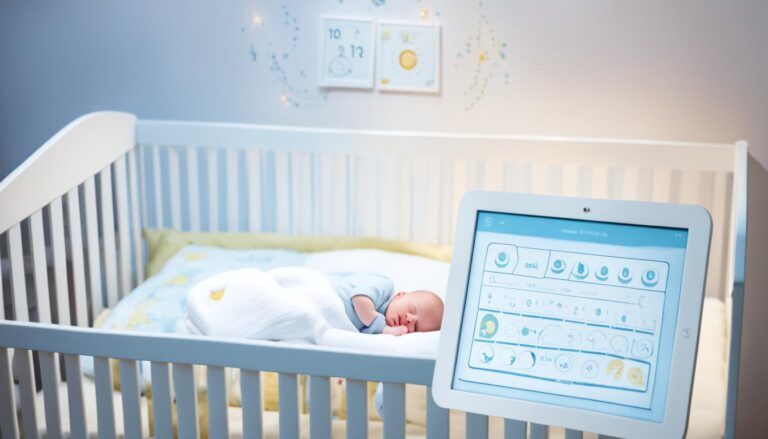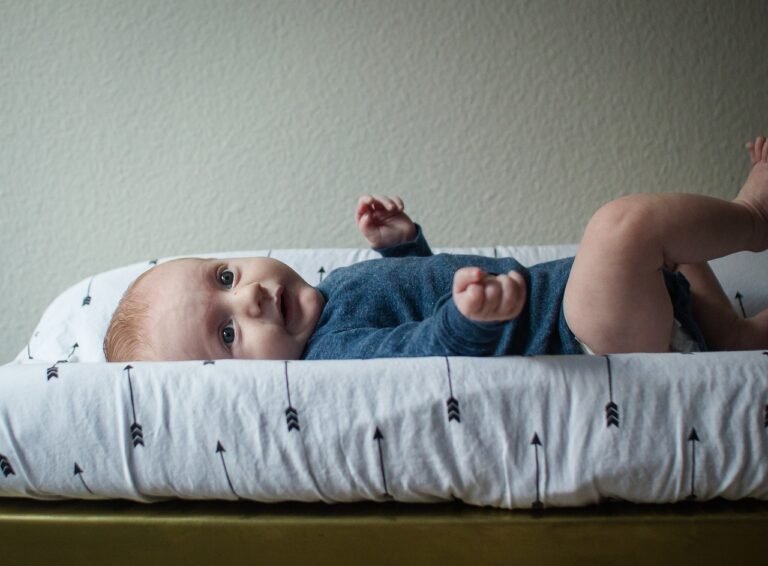Bringing Newborn Home from Hospital: Essentials & Tips
Bringing your newborn home from the hospital is an exciting and important moment in your parenting journey. It’s essential to be prepared and equipped with the right essentials and tips to ensure a smooth transition for both you and your baby. In this article, we will provide a comprehensive guide on everything you need to know about bringing your newborn home from the hospital. From newborn care at home to creating a safe and nurturing environment, establishing sleep routines, feeding essentials, and maintaining proper hygiene, we’ve got you covered.
When it comes to bringing your baby home, it’s normal to feel a mix of excitement and nervousness. After all, you want to provide the best care and ensure their safety and well-being. By following the tips and guidelines we’ll share, you can confidently navigate the early days of bringing your newborn home.
- Preparing for bringing your newborn home is crucial for a smooth transition.
- Create a newborn-friendly environment in your home by setting up a nursery and organizing baby essentials.
- Establish sleep routines to promote better sleep for your newborn and the whole family.
- Learn about breastfeeding and bottle-feeding essentials for feeding your newborn.
- Maintain proper hygiene through diapering and bathing your newborn.
Preparing for the Arrival: What You Need to Know Beforehand
Before bringing your newborn home from the hospital, it’s crucial to be prepared and have everything in place. This section will provide you with a comprehensive checklist of items and tasks to complete before the arrival of your baby. It will cover important aspects such as setting up the nursery, babyproofing your home, gathering necessary supplies and essentials, and creating a welcoming and safe environment for your newborn.
When preparing for the arrival of your newborn, there are several key tasks you should focus on:
- Setting up the nursery: Create a comfortable and functional space for your baby by organizing furniture, selecting a crib, changing table, and storage solutions.
- Babyproofing your home: Take necessary measures to ensure your home is safe and secure for your little one. This includes covering electrical outlets, installing baby gates, securing furniture, and removing potential hazards.
- Gathering necessary supplies and essentials: Make a checklist of essential items such as diapers, wipes, clothing, blankets, bottles, breast pump (if applicable), and bathing supplies. Stock up on these items in advance to avoid any last-minute stress.
- Creating a welcoming environment: Decorate the nursery with soft colors, soothing lighting, and cozy elements to create a warm and inviting space for your baby.
By taking care of these tasks before your newborn’s arrival, you can ensure a smooth and comfortable transition for both you and your baby. Being well-prepared will alleviate stress and allow you to focus on bonding and enjoying those precious moments with your little one.
| Item | Task |
|---|---|
| Setting up the nursery | Organize furniture, choose a crib, changing table, and storage |
| Babyproofing your home | Secure electrical outlets, install baby gates, anchor furniture |
| Gathering necessary supplies | Stock up on diapers, wipes, clothing, blankets, bottles, breastfeeding essentials |
| Creating a welcoming environment | Decorate the nursery with soft colors and cozy elements |
Bringing Newborn Home from Hospital: Making the Journey Safe
Choosing the Right Car Seat
Making the journey home from the hospital with your newborn requires careful consideration for their safety and comfort. One of the most important steps you can take is choosing the right car seat for your baby. A car seat is not only a legal requirement but also a vital tool to protect your little one in the event of an accident.
When selecting a car seat, ensure that it meets safety standards and is appropriate for your newborn’s age, weight, and height. Look for car seats that are rear-facing, as this position provides the best protection for infants. Additionally, check for the proper installation methods and compatibility with your vehicle.
To further enhance car seat safety, make sure to buckle your newborn in correctly. Secure the harness snugly, with the straps positioned at or below your baby’s shoulders. Remember to remove bulky clothing or blankets that may interfere with the harness’s effectiveness.
Planning Your Route: Addressing Safety and Comfort
Planning the route for your journey home is another essential aspect of ensuring your newborn’s safety and comfort. Take into account factors that will contribute to a smooth and enjoyable ride. Avoiding busy traffic and selecting routes with fewer potholes or rough surfaces can help create a more comfortable experience for your baby.
Consider the duration of the trip and plan for breaks if necessary. Newborns may require frequent feeding or diaper changes, so having convenient stops along the way can make the journey more manageable for both you and your baby.
It’s also a good idea to have some soothing music or white noise available to create a calming atmosphere during the ride. Additionally, keep the temperature in the car comfortable, ensuring that your newborn is neither too hot nor too cold.
By choosing the right car seat and planning your route with safety and comfort in mind, you can ensure a secure and pleasant journey home for your precious newborn.
Creating a Newborn-Friendly Environment at Home
Creating a newborn-friendly environment at home is essential to ensure your baby’s comfort and well-being. By following these guidelines, you can create a safe and nurturing environment for your newborn at home.
Setting up a Nursery
The nursery is the heart of your newborn’s space, so it’s important to set it up with care. Arrange the essential furniture and equipment, such as a crib, changing table, and storage for baby essentials. Make sure to place the crib away from windows, cords, or any potential hazards. Use soft, soothing colors on the walls and consider adding blackout curtains to create a calm and peaceful atmosphere.
Arranging Essential Furniture and Equipment
Organize the furniture and equipment in a functional layout that allows for easy access and movement. Place the diaper-changing station near the changing table and keep diapers, wipes, and other essentials within arm’s reach. Set up a comfortable breastfeeding or bottle-feeding area with a cozy chair and a side table for supplies.
Creating a Calm and Soothing Atmosphere
Use soft lighting, such as table lamps or dimmable wall sconces, to create a soothing ambiance for your newborn. Consider adding a white noise machine or a gentle lullaby player to help your baby relax and sleep soundly. Keep the room temperature comfortable and use a humidifier to maintain proper humidity levels.
Organizing Baby Essentials for Easy Access
Keep baby essentials, such as diapers, wipes, clothes, and burp cloths, neatly organized and easily accessible. Use storage bins, baskets, or shelves to keep everything in order. Label each item to ensure convenience and efficiency when caring for your newborn.
By following these tips and creating a newborn-friendly environment at home, you can provide your baby with a comfortable and nurturing space to grow, learn, and thrive.
Understanding Newborn Sleep Routines for Better Nights
Understanding newborn sleep routines and establishing good sleep habits are crucial for both the baby and parents’ well-being. Adequate sleep is essential for a newborn’s growth, development, and overall health. It also contributes to the physical and mental well-being of parents, ensuring they are refreshed and ready to care for their little one.
To promote better sleep for your newborn and ensure restful nights for the whole family, it is important to create a sleep-friendly environment, establish consistent sleep routines, implement safe sleep practices, and address common sleep challenges.
Setting Up for Sleep Success
Setting up a sleep-friendly environment can significantly impact your newborn’s sleep patterns. Here are some tips to create an optimal sleep environment:
- Design a peaceful nursery: Choose soft, soothing colors for the walls, use blackout curtains to block out excess light, and incorporate white noise machines or sound soothers to create a serene atmosphere.
- Create a comfortable sleeping space: Use a firm and safe crib mattress, cover it with a fitted sheet, and ensure the crib meets safety standards. Avoid using soft bedding, pillows, toys, or bumper pads in the crib, as they can pose suffocation hazards.
- Maintain a consistent sleep environment: Establish a regular bedtime routine that includes activities such as a warm bath, gentle massage, reading a bedtime story, or singing a lullaby. Dim the lights, lower the noise levels, and create a calm ambiance to signal to your baby that it’s time to sleep.
Safe Sleep Practices
Implementing safe sleep practices is crucial to reduce the risk of Sudden Infant Death Syndrome (SIDS) and promote a safe sleeping environment for your baby. Here are some guidelines to follow:
- Back to sleep: Always place your newborn on their back to sleep, both for naps and nighttime sleep.
- Avoid overheating: Dress your baby in lightweight and breathable clothing, and keep the room temperature comfortable and moderate. Use a sleep sack or swaddle to keep them warm without blankets.
- Share a room, not a bed: It is recommended that newborns sleep in the same room as their parents for the first six months to a year, but in their separate sleep space, such as a crib or bassinet.
- Keep the sleep area clear: Remove any objects, loose bedding, pillows, or stuffed animals from the crib to reduce the risk of suffocation or choking hazards.
By following these tips, you can create a sleep-friendly environment, establish consistent sleep routines, implement safe sleep practices, and address common sleep challenges to ensure better sleep for your newborn and restful nights for the whole family.
Feeding Your Newborn: Breastfeeding and Bottle-feeding Essentials
Feeding your newborn is an essential aspect of their care and growth. Whether you choose to breastfeed or bottle-feed, it’s important to have the right knowledge and tools for a successful feeding experience. This section will discuss both breastfeeding and bottle-feeding essentials, providing guidance on the first feedings at home, including proper latch techniques, feeding positions, and troubleshooting common feeding challenges. We will also provide a comprehensive checklist of feeding gear and supplies that are essential for a smooth and convenient feeding experience.
When it comes to breastfeeding, establishing a proper latch is crucial for effective milk transfer and preventing nipple soreness. We will explain the importance of a deep latch and offer tips on achieving it for a comfortable breastfeeding experience. Additionally, we will cover different feeding positions that can accommodate both you and your baby’s comfort.
For those who choose to bottle-feed, we will discuss the essentials of safe formula preparation and proper bottle-feeding techniques. We will provide guidance on selecting the right bottles and nipples for your baby’s needs and offer tips to troubleshoot common bottle-feeding challenges, such as excessive air intake or difficulty with transitioning from breast to bottle.
To ensure a smooth and convenient feeding experience, we will also provide a feeding gear checklist. This checklist will include items such as breast pumps, nursing pillows, nipple creams, feeding bottles, sterilizers, bottle warmers, and more. Having these essential feeding supplies on hand can make feeding your newborn a hassle-free task.
By understanding the essentials of both breastfeeding and bottle-feeding, as well as having the necessary feeding gear and supplies, you can confidently navigate the first feedings at home and provide your newborn with the nourishment they need for healthy growth and development.
Diapering Essentials: Mastering the Changes at Home

Diapering is a routine task in caring for a newborn, and having the right essentials and tips can make the process more efficient and comfortable. This section will cover diapering essentials, including choosing the right diapers and wipes, diaper changing techniques, and addressing common diapering challenges. By following these guidelines, you can master the diapering routine and ensure your baby stays clean and comfortable.
When it comes to choosing diapers for your newborn, opt for ones that are specifically designed for their delicate skin. Look for diapers that are hypoallergenic, offer excellent absorbency, and have a soft and comfortable lining. It’s also essential to choose the appropriate size to ensure a snug fit.
Similarly, selecting the right wipes is crucial for maintaining proper hygiene during diaper changes. Look for wipes that are fragrance-free, gentle on the skin, and provide effective cleaning without causing irritation. Consider using wipes with natural and organic ingredients for added peace of mind.
Mastering the art of diaper changing is essential for both you and your baby’s comfort. Follow these diaper changing techniques to make the process smoother:
- Prepare the changing area: Set up a clean and comfortable space with all the necessary supplies within reach.
- Gently clean the diaper area: Wipe your baby’s bottom with a diaper wipe or damp cloth, ensuring thorough cleaning without being too rough.
- Avoid diaper rash: Apply a diaper cream or barrier ointment to protect your baby’s skin from irritation and diaper rash.
- Secure the new diaper: Position the new diaper under your baby, fasten it snugly but not too tight, and ensure the tabs are securely attached.
- Dispose of the soiled diaper: Seal the used diaper in a diaper disposal bag before discarding it in a proper trash bin.
While diapering is a routine task, it can come with its fair share of challenges. Some common diapering issues you may encounter include leaks, diaper blowouts, and diaper rash. Address these challenges by ensuring the diaper fits properly, checking for leaks around the legs, using diaper rash creams or ointments, and changing diapers promptly.
Dressing Your Newborn: A Guide to Baby Clothing
Finding the Right Fit for Your Newborn
Dressing your newborn in appropriate clothing is important for their comfort and protection. Finding the right fit ensures optimal comfort and ease of movement. Here are some tips to help you choose the perfect size:
- Refer to size charts: Each brand may have different sizing, so consult their size chart before making a purchase.
- Leave room for growth: Babies grow quickly, so it’s best to choose clothing with a bit of room to accommodate their growth spurts.
- Check the neck and waistbands: Ensure that neck and waistbands are not too tight, as they can cause discomfort or restrict movement.
- Consider the length of sleeves and legs: Opt for clothing that is long enough to cover your baby’s arms and legs to keep them warm and protected.
Weather-Appropriate Babywear for Going Home
When it comes to selecting weather-appropriate babywear for going home, consider the prevailing conditions and dress your newborn accordingly. Here are some guidelines to follow:
- Layer up: Layering is key to adapting to changing weather conditions. Use a onesie as a base layer and add additional clothing or blankets as needed.
- Choose breathable materials: Opt for clothing made from natural fibers like cotton, as they allow your baby’s skin to breathe and regulate body temperature.
- Consider the season: In colder months, dress your newborn in warm layers, including hats, mittens, and blankets, to protect them from the cold. In warmer months, choose lightweight and loose-fitting clothing to keep them cool and comfortable.
- Protect from the sun: If you’re bringing your newborn home during sunny weather, make sure to use a lightweight sun hat and apply a baby-safe sunscreen to protect their delicate skin.
By following these tips and guidelines, you can ensure that your newborn is dressed comfortably and appropriately for any weather conditions. It’s essential to prioritize their comfort and protection as you embark on this exciting journey of parenthood.
The First Bath and Beyond: Newborn Hygiene Basics

Assembling Bath Time Supplies
Before giving your newborn their first bath, it’s important to gather all the necessary bathing supplies. Here’s a list of essential items you’ll need:
- Baby bathtub or sink insert
- Gentle baby soap or cleanser
- Soft washcloths
- Hooded towel
- Baby shampoo
- Baby lotion
- Diapers and fresh clothes for after the bath
- Soft brush or comb for their delicate hair
- Nail clippers or emery boards for nail care
- Cotton balls or pads for cleaning their eyes and ears
By having these supplies ready, you can ensure a smooth and convenient bathing experience for both you and your baby.
Tips for Your Baby’s First Baths
When it comes to your baby’s first baths, here are some tips to keep in mind:
- Ensure water temperature safety: Test the water with your elbow or a bath thermometer to make sure it’s comfortably warm, around 100°F (37°C).
- Support their head and neck: Use your forearm to cradle your baby’s head and neck, providing gentle support throughout the bath.
- Start with sponge baths: In the early weeks, sponge baths are a gentle and safe way to clean your newborn until their umbilical cord stump falls off.
- Use a gentle touch: Handle your baby with care, using soft strokes and gentle movements during the bath.
- Keep the bath short and sweet: Newborns don’t need long baths, aim for about 5 minutes to prevent them from getting cold or overwhelmed.
- Pay attention to their cues: Observe your baby’s reactions and adjust the bath routine accordingly. Some babies enjoy the water, while others may feel anxious.
- Dry and dress your baby promptly: After the bath, wrap your baby in a warm towel and dry them thoroughly, paying extra attention to the folds of their skin. Dress them in clean clothes to keep them warm and comfortable.
By following these tips, you can make your baby’s first baths a gentle and enjoyable experience, promoting good hygiene and bonding between you and your little one.
| Bathing Supplies | Image |
|---|---|
| Baby bathtub or sink insert | |
| Gentle baby soap or cleanser | |
| Soft washcloths | |
| Hooded towel | |
| Baby shampoo | |
| Baby lotion | |
| Diapers and fresh clothes for after the bath | |
| Soft brush or comb for their delicate hair | |
| Nail clippers or emery boards for nail care | |
| Cotton balls or pads for cleaning their eyes and ears |
Conclusion
Bringing your newborn home from the hospital is an exciting and momentous occasion. By following the essential tips and guidelines provided in this article, you can ensure a smooth and comfortable transition for both you and your baby.
From preparing for the arrival to creating a nurturing environment, establishing sleep routines, feeding essentials, diapering, dressing, and maintaining proper hygiene, you can confidently navigate the early days of bringing your newborn home. Take the time to prepare your home, gather the necessary supplies, and create a welcoming and safe space for your little one.
Remember, this is a special time to cherish and enjoy the precious moments with your newborn. As you embark on this journey of parenthood, embrace the challenges and joys that come with it. Trust your instincts and seek support from loved ones and healthcare professionals whenever needed. Congratulations on this wonderful new chapter in your life!
FAQ
What do I need to do before bringing my newborn home from the hospital?
Before bringing your newborn home, it’s important to be prepared. Some essential tasks include setting up the nursery, babyproofing your home, gathering necessary supplies, and creating a safe and welcoming environment for your baby.
How can I ensure my newborn’s safety during the journey home from the hospital?
To ensure your newborn’s safety during the journey home, it’s crucial to choose the right car seat that meets safety standards and plan your route to prioritize safety and comfort. Avoiding busy traffic and providing a smooth ride are important considerations.
How can I create a newborn-friendly environment at home?
Creating a newborn-friendly environment involves setting up a nursery, arranging essential furniture and equipment, and creating a calm and soothing atmosphere. Organizing baby essentials for easy access is also important.
How can I establish newborn sleep routines for better nights?
To establish newborn sleep routines, it’s important to set up a sleep-friendly environment, establish consistent sleep routines, and implement safe sleep practices. Understanding common sleep challenges can also help you promote better sleep for your baby.
What are the essentials for feeding my newborn at home?
Feeding your newborn involves both breastfeeding and bottle-feeding. For breastfeeding, proper latch techniques, feeding positions, and troubleshooting common challenges are important. Both methods require essential feeding gear and supplies for a convenient experience.
What do I need to know about diapering my newborn at home?
Diapering is a routine task that requires the right essentials and techniques. Choosing the right diapers and wipes, mastering diaper changing techniques, and addressing common diapering challenges are all important aspects of diapering your newborn.
How can I dress my newborn in appropriate clothing?
Dressing your newborn involves finding the right fit, understanding their clothing needs, and selecting weather-appropriate babywear. Choosing the right materials, layering options, and ensuring proper fit are all important for your baby’s comfort and ease of movement.
What do I need to know about newborn hygiene at home?
Maintaining proper hygiene for your newborn involves the essentials for bathing, such as assembling bathing supplies, ensuring water temperature safety, and using proper bathing techniques. Tips for your baby’s first baths can also help you navigate this aspect of newborn care.










